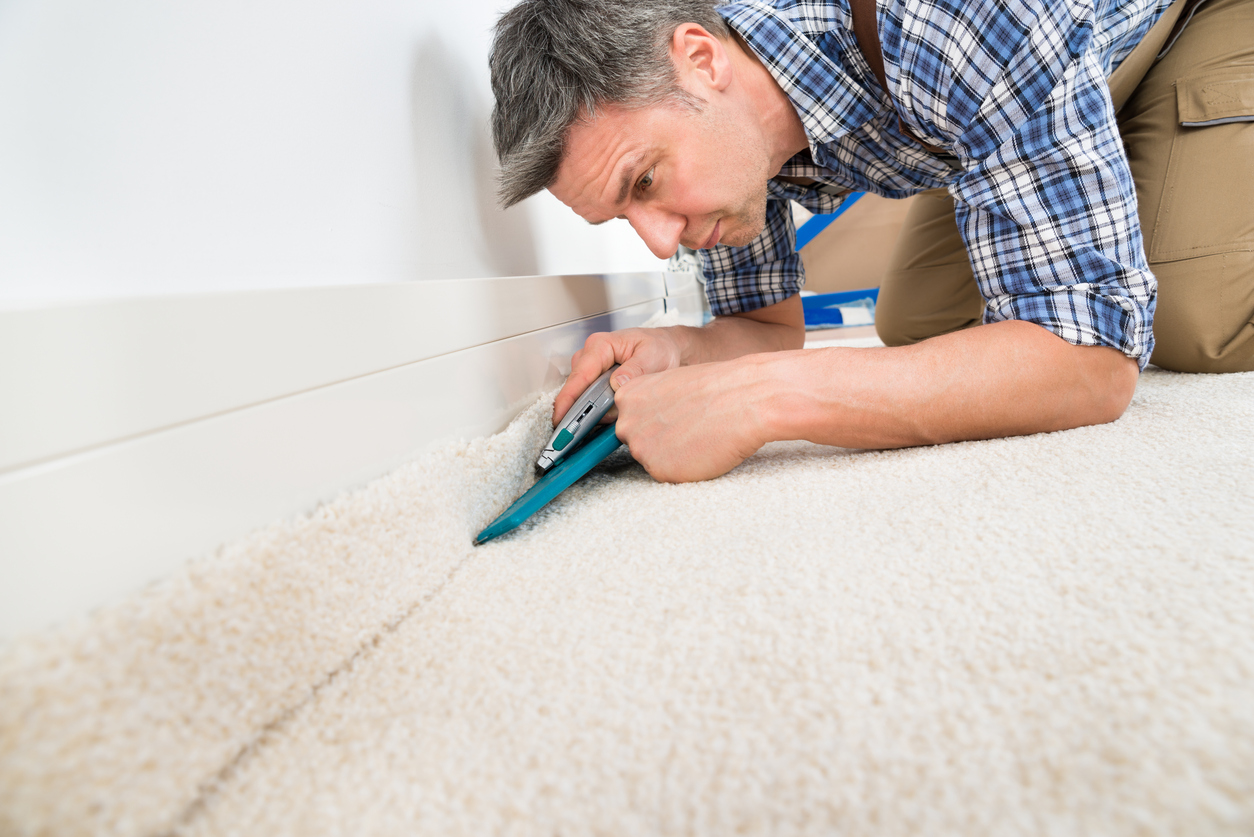Carpet Buckling? Find Out Why and How to Fix It
That annoying ripple in your carpet isn't just unsightly; it's a tripping hazard waiting to happen. But before you panic, understand that carpet buckling is a relatively common issue, and there are steps you can take to address it. This guide will walk you through the reasons behind carpet wrinkles, the solutions for smoothing them out, and preventive measures to keep your floor flat and safe.
So, why does my carpet buckle? Several culprits can cause this floor frustration. Poor installation is a primary suspect. If the carpet wasn't stretched and secured correctly initially, it can loosen over time, leading to waves and ripples. Changes in humidity and temperature can also play a role. Carpet fibers expand and contract with fluctuating moisture levels, causing the material to buckle if not properly secured. Excessive foot traffic in high-traffic areas can exacerbate existing buckling or even trigger it.
Historically, carpets were often woven directly onto the floor, making buckling less of an issue. However, modern carpet installation typically involves separate padding and tack strips, which, while offering benefits like cushioning and easier replacement, can contribute to buckling if not handled properly. Understanding the installation process is key to preventing and resolving buckling problems.
Addressing carpet buckling isn't just about aesthetics. It's about safety and preserving your investment. Buckled carpets are more prone to wear and tear in the affected areas, shortening their lifespan. They also present a tripping hazard, especially for children and the elderly.
Several factors contribute to carpet wrinkles. Improper installation, where the carpet isn't stretched tight enough, is a leading cause. Environmental factors such as high humidity or temperature fluctuations can also cause the carpet fibers to expand and contract, leading to buckling. Dragging heavy furniture across the carpet without proper protection can also contribute to the problem. Furthermore, delamination, where the backing separates from the carpet fibers, can create unevenness and buckling.
Sometimes, simply restretching the carpet and re-securing it to the tack strips can resolve minor buckling. For more severe cases, patching or replacing the affected area might be necessary. Power stretching is a common technique used by professionals to effectively stretch and tighten the carpet.
To prevent carpet buckles, ensure proper installation by hiring a qualified installer. Maintain a consistent indoor humidity level and avoid excessive moisture. Use furniture sliders when moving heavy objects and vacuum regularly to prevent dirt and debris buildup that can contribute to buckling.
One simple example is using a knee kicker tool to restretch the carpet in a small area with minor buckling. Another example is using a carpet seam sealer to address delamination issues.
Advantages and Disadvantages of DIY Carpet Repair
| Advantages | Disadvantages |
|---|---|
| Cost Savings | Potential for further damage if not done correctly |
| Immediate fix for minor issues | May void carpet warranty |
Best Practices:
1. Hire qualified installers: Professional installation is crucial for preventing future issues.
2. Maintain proper humidity: Use a dehumidifier in humid climates.
3. Use furniture sliders: Protect your carpet when moving heavy items.
4. Regular vacuuming: Keep your carpet clean to prevent debris buildup.
5. Address spills promptly: Clean up spills immediately to prevent moisture damage.
Real-world Examples:
1. A homeowner in a humid climate experienced buckling due to moisture absorption.
2. A family with young children experienced buckling in high-traffic areas.
3. Improper installation led to buckling within months of new carpet being laid.
4. Dragging a heavy sofa across the carpet caused buckling.
5. Delamination caused the carpet to bubble and buckle in certain areas.
FAQ:
1. Why is my carpet bubbling? Moisture, improper installation, or delamination.
2. How do I fix buckled carpet? Restretching, patching, or replacement.
3. Can I fix buckled carpet myself? Minor buckling can be addressed with DIY methods.
4. How do I prevent carpet buckling? Proper installation and humidity control.
5. How much does it cost to fix buckled carpet? Varies depending on severity and method.
6. What tools do I need to fix buckled carpet? Knee kicker, power stretcher (for professional use).
7. How long does it take to fix buckled carpet? Depends on the severity and method used.
8. Who should I contact to fix buckled carpet? A qualified carpet installer.
Tips and Tricks:
Use a steam iron carefully to address minor buckling caused by humidity. Place a damp towel over the affected area and lightly iron to help the fibers relax.
Dealing with a buckled carpet can be frustrating, but understanding the causes and implementing the right solutions can restore your floor to its former glory. From professional repairs to DIY fixes, there are options available for every situation. By addressing the root cause and taking preventive measures, you can extend the life of your carpet, maintain a safe home environment, and avoid the annoyance of tripping hazards. Remember, proper installation, humidity control, and prompt attention to spills are key to keeping your carpet smooth and wrinkle-free. Don’t hesitate to consult with a professional if you’re unsure about the best course of action for your specific situation. A smooth, unbuckled carpet not only enhances the aesthetic appeal of your home but also contributes to safety and comfort. Taking proactive steps can save you money and frustration in the long run, ensuring a beautiful and functional floor covering for years to come.
Unlock your potential exploring the srm mca online syllabus
Unlocking the tiktok aesthetic a visual journey
Drowning in a sea of creativity your guide to local art festivals this week



:max_bytes(150000):strip_icc()/Woman-choosing-carpet-color-samples-56a812715f9b58b7d0f0651a.jpg)









